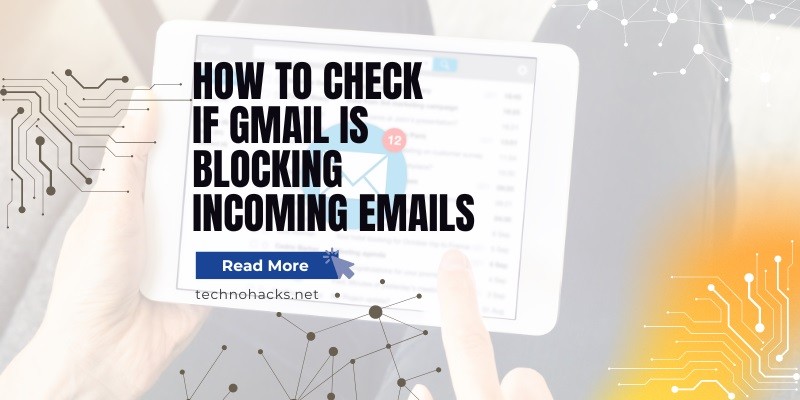Last Updated on May 5, 2025 by Jim C.
Email deliverability is crucial for both personal and professional communication. When emails don’t reach their intended recipients, it can lead to missed opportunities and communication breakdowns. One common issue is Gmail blocking incoming emails, which can be frustrating and challenging to diagnose. This article aims to guide you through understanding why Gmail might block emails, how to identify if this is happening, and what steps you can take to resolve and prevent these issues.
1. Understanding Gmail’s Email Blocking Mechanism
Gmail uses sophisticated algorithms to detect and block spam and potentially harmful emails. Several factors can trigger these mechanisms:
- Spammy Content: Emails containing certain keywords, excessive images, or unapproved attachments can be flagged as spam.
- High Email Volume: Sending a large number of emails in a short period can raise red flags.
- Poor Sender Reputation: If your domain or IP address has a history of sending spam, Gmail is more likely to block your emails.
- Incorrect Email Authentication Settings: Missing or incorrect SPF, DKIM, and DMARC records can lead to email blocking.
- IP Address Blacklisting: If your IP address is on a blocklist, Gmail may block all emails from that address.
2. Signs That Gmail Is Blocking Your Emails
Identifying whether Gmail is blocking your emails can be tricky. Here are some signs to look out for:
- Sudden Drop in Email Open Rates: A noticeable decrease in open rates may indicate that emails are not reaching inboxes.
- Increase in Bounce Rates: High bounce rates can be a sign that emails are being rejected by Gmail servers.
- Emails Not Appearing in Inbox or Spam Folder: If recipients report not receiving your emails, even in their spam folders, this could be a sign of blocking.
- High Number of Spam Complaints: Frequent spam complaints can lead to Gmail blocking your emails.
- Error Messages from Email Service Providers: Notifications or error messages indicating delivery issues can be a clue.
3. Tools and Methods to Check If Gmail Is Blocking Your Emails
Several tools and methods can help you diagnose email blocking issues:
- Google Postmaster Tools: This tool provides data and diagnostics about your email performance, including delivery errors, spam reports, and feedback loops. It helps you monitor key metrics like spam rate, feedback loop, and domain reputation.
- Email Performance Metrics: Regularly monitor metrics such as bounce rates, open rates, and spam complaints through your email service provider’s dashboard.
- Third-Party Tools: Tools like Mailgun, UniOne, and GlockApps can help identify and resolve email blocking issues by providing detailed insights into your email deliverability.
4. Steps to Take If Gmail Is Blocking Your Emails
If you suspect Gmail is blocking your emails, here are steps you can take to resolve the issue:
- Email Authentication: Ensure that SPF, DKIM, and DMARC are properly set up. These protocols help verify the authenticity of your emails and improve deliverability.
- SPF (Sender Policy Framework): Specifies which mail servers are allowed to send emails on behalf of your domain.
- DKIM (DomainKeys Identified Mail): Adds a digital signature to your emails, verifying that they haven’t been altered.
- DMARC (Domain-based Message Authentication, Reporting & Conformance): Provides instructions on how to handle emails that fail SPF or DKIM checks.
- Content Quality: Avoid using spammy content, such as excessive images, unapproved attachments, or certain keywords. Ensure your emails are well-designed and have clear subject lines.
- Sender Reputation: Build and maintain a good sender reputation by sending emails consistently and avoiding spam complaints. Use tools like Google Postmaster to monitor your reputation.
- List Hygiene: Regularly clean and verify your email lists to remove invalid or inactive email addresses. This helps reduce bounce rates and improve deliverability.
5. Preventive Measures to Avoid Future Blocking
To avoid future issues with Gmail blocking your emails, consider these preventive measures:
- Adhering to Gmail’s Best Practices: Obtain explicit consent before sending emails and provide an easy opt-out option for recipients. This helps reduce spam complaints and improve deliverability.
- Monitoring and Adjusting Email Campaigns: Regularly review email performance metrics and adjust your strategies based on feedback and performance data. This helps maintain a good sender reputation and avoid blocking issues.
- Staying Updated with Gmail Policies: Keep abreast of changes in Gmail’s email policies and requirements to ensure compliance and avoid blocking.
6. Troubleshooting and Seeking Support
If you’ve taken the above steps and still face issues, consider these troubleshooting methods:
- Contacting Gmail Support: Reach out to Gmail support for assistance. Provide detailed information about your issue, including error messages and steps you’ve taken to resolve it.
- Using Community Forums and Resources: Leverage community forums for advice and shared experiences. Many users and experts share valuable insights and solutions to common email blocking issues.
Conclusion
Ensuring your emails reach their intended recipients is crucial for effective communication. By understanding Gmail’s email blocking mechanisms, identifying signs of blocking, using diagnostic tools, and taking preventive measures, you can improve your email deliverability and avoid future issues. Implementing best practices and staying updated with Gmail’s policies will help maintain a good sender reputation and ensure your emails land in the inbox.

